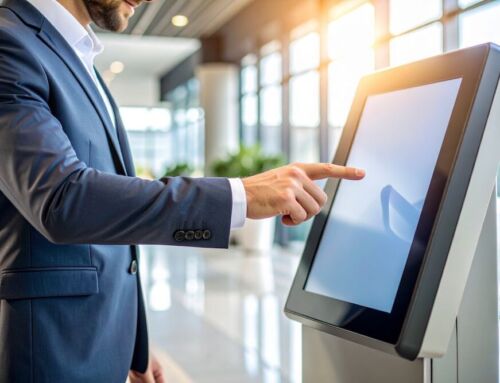The first time most people heard of biometric technology was when they got their first biometric passport. These futuristic-sounding travel documents have been the norm in the UK for close to 20 years, and the government issues some five million of them every year.
‘E-passports’ are still the most visible example of biometric technology in use today. But ironically, that reign is likely to come to an abrupt halt in the next few years – and all because of how biometric technology is evolving.
There’s an argument over whether the UK’s version of the e-passport counts as true biometric technology, anyway. UK passports contain a chip which holds all the information held in the paper version (including the photo) in digitised form. This makes them harder to counterfeit, reduces human error in confirming identity, and allows for automated scanning to reduce queues at border controls.
Other versions of the e-passport, including those used in the EU, do contain ‘true’ biometric information like a scan of a person’s fingerprint. Biometrics is defined as the measure of physical or biological traits to identify someone.
Thanks to the advent of cloud computing and its ability to store data in vast networked databases, the need to carry around biometric data on a passport chip is now obsolete. Back in the noughties, the model for making biometric passports work was to scan travellers’ fingerprints and passports simultaneously, comparing the information on the chip to the actual fingerprint. Any attempt to use a passport fraudulently would thus be immediately weeded out.
But this is no longer necessary. With biometric data stored in secure databases, all you need is a kiosk fitted with the right sort of scanner. As long as the original fingerprint (or face, or retina scan, or even DNA) is accurately verified with the right personal details when submitted, the kiosk can do the rest. It can immediately identify the person attempting to cross the border checkpoint. And immediately confirm ticket bookings, visa status, security alerts etc.
Cutting out the middle man
That doesn’t just make chips embedded in passports obsolete. What we’re now starting to see is passports themselves being phased out full stop. When you identify someone by cross-referencing a biometric scan to their personal records in a database, you don’t need a physical identification document to go with it. The digital record is the passport.
In a world where biometric technology is still yet to be established as a day-to-day reality for most people, even if the concept is already widely understood, this still sounds very futuristic. But the wheels for replacing paper passports with biometric scanners are already well in motion.
Singapore’s Changi Airport went passport-free for residents in early 2024, opting for a facial scanning system instead. Dubai International Airport is also in the process of transitioning to a similar system. The European Entry/Exit System (EES) will require all non-EU travellers to submit biometric data as a condition of entry to a non-EU country. That data will then be used to manage visa requirements digitally, as well as tighten security. It’s a first step to a biometric passport system that would be operable for foreign travellers heading to another country.




